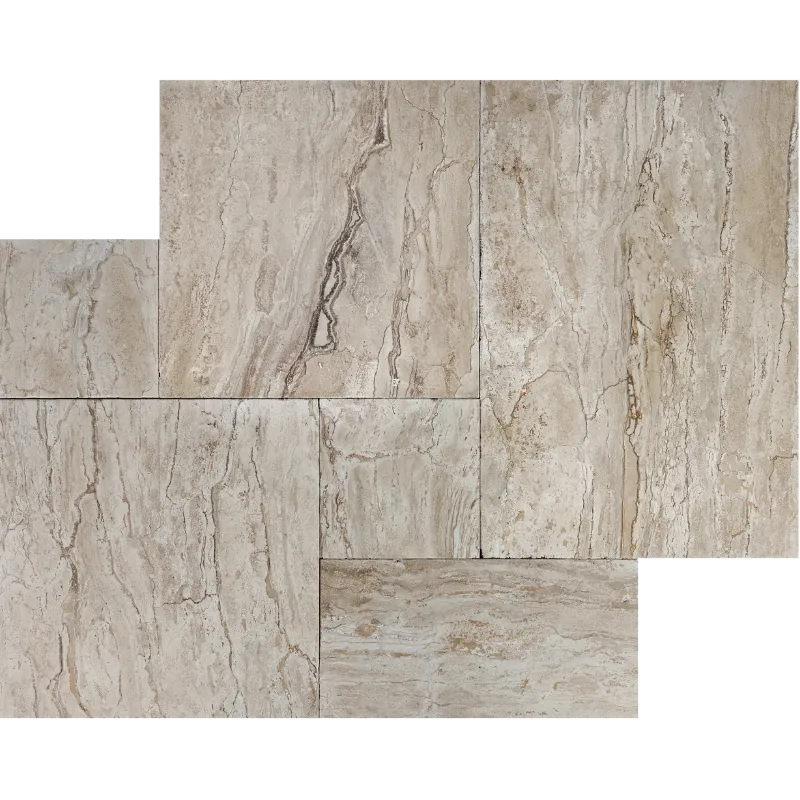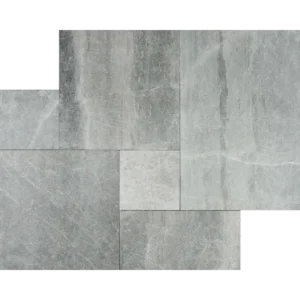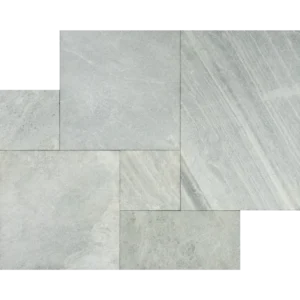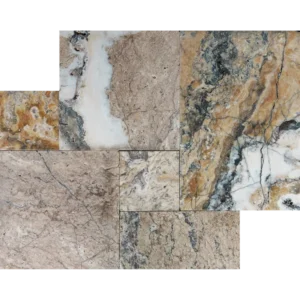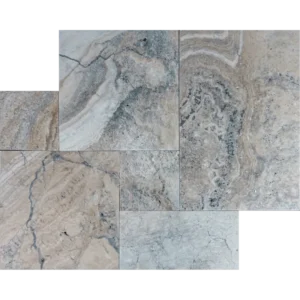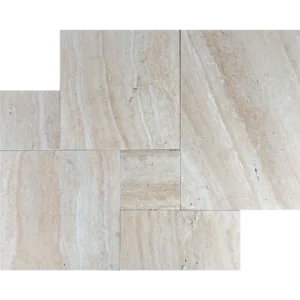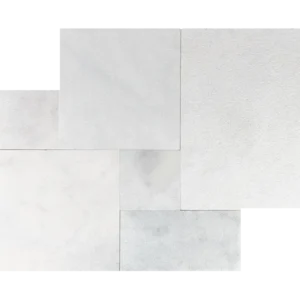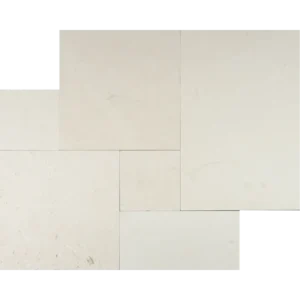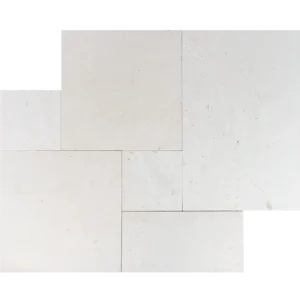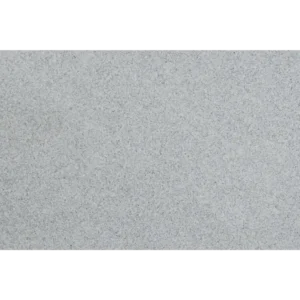Ivory River – French Pattern Tumbled Travertine Paver blends soft creamy tones with subtle, natural veining to create a timeless, elegant look for any outdoor area. The tumbled finish adds a gently weathered texture, offering both visual charm and slip resistance—perfect for patios, pool surrounds, and walkways.
Designed in a classic French Pattern layout, each set combines multiple pre-cut sizes to create a flowing, dynamic surface that enhances the overall aesthetic and brings harmony to your outdoor design.
French Pattern Set Includes:
(2) pieces – 16″ x 16″
(1) piece – 16″ x 24″
(1) piece – 8″ x 16″
(2) pieces – 8″ x 8″
Installation Guide – Ivory River French Pattern Tumbled Travertine Pavers
Tools & Materials Needed
Materials: crushed stone or gravel base, leveling sand or flexible thin-set mortar, joint filler (polymeric sand, fine sand, or grout), penetrating stone sealer, clean water.
Tools: tape measure, shovel, plate compactor, long level, rubber mallet, screed board, wet saw with diamond blade, grout float, spacers, broom, protective gear (gloves, goggles).
Step 1 — Base Preparation: Stable & Level Foundation
Excavate the area according to the paver thickness plus base layers.
Compact the soil thoroughly.
Spread and compact 4–6″ (100–150 mm) of crushed stone or gravel. For vehicle traffic, increase to 8–12″ (200–300 mm).
Ensure proper drainage with a slope of ~1/4″ per foot (2%).
Apply a 1″ (25 mm) layer of leveling sand or 3/4–1″ (20–30 mm) mortar and screed smooth.
Step 2 — Dry Layout: Plan the French Pattern
Dry-lay the pavers to preview the French Pattern and distribute tones evenly.
Mix pavers from multiple crates for a natural, uniform appearance.
Mark centerlines or reference points for symmetry.
Plan edge cuts and corner placements in advance.
Step 3 — Setting the Pavers: Sand-Set or Mortar-Set
Sand-Set Method:
Place pavers on the prepared sand bed.
Tap lightly with a rubber mallet to set each piece.
Check level using a long straightedge or level.
Install edge restraints to keep the layout secure.
Mortar-Set Method:
Spread flexible thin-set mortar on the base.
Back-butter each paver for full contact.
Set pavers and tap lightly; ensure level alignment.
Allow mortar to cure as per manufacturer’s instructions.
Step 4 — Joint Spacing: Natural & Functional
Step 5 — Filling Joints
Sand-Set: Sweep polymeric or fine sand into joints.
Mortar-Set: Use non-sanded or flexible grout suitable for natural stone.
Remove excess material before it hardens.
Test filler on a small area first to avoid discoloration on the travertine.
Step 6 — Sealing: Protection & Enhancement
Once joints are fully cured, apply a penetrating stone sealer to enhance color and protect against stains.
Test the sealer on a small sample area first.
Reapply every 1–3 years depending on traffic and exposure.
Avoid surface film sealers that can change texture or slip-resistance.
Step 7 — Initial Cleaning & Curing
Avoid heavy traffic until mortar or filler is fully cured (24–72 hours depending on product).
Sweep and rinse gently to remove dust and debris.
Use pH-neutral stone cleaners only; avoid acidic or abrasive products.
Maintenance Tips
Sweep or rinse regularly to prevent dirt buildup.
Clean spills promptly to avoid staining.
Avoid salt or harsh chemical deicers.
Reseal periodically to maintain protection and aesthetic.
⚠️ Important Note: Ivory River travertine is natural stone; color, veining, and texture will vary. Always dry-lay and inspect pavers before final installation to ensure a harmonious layout.


